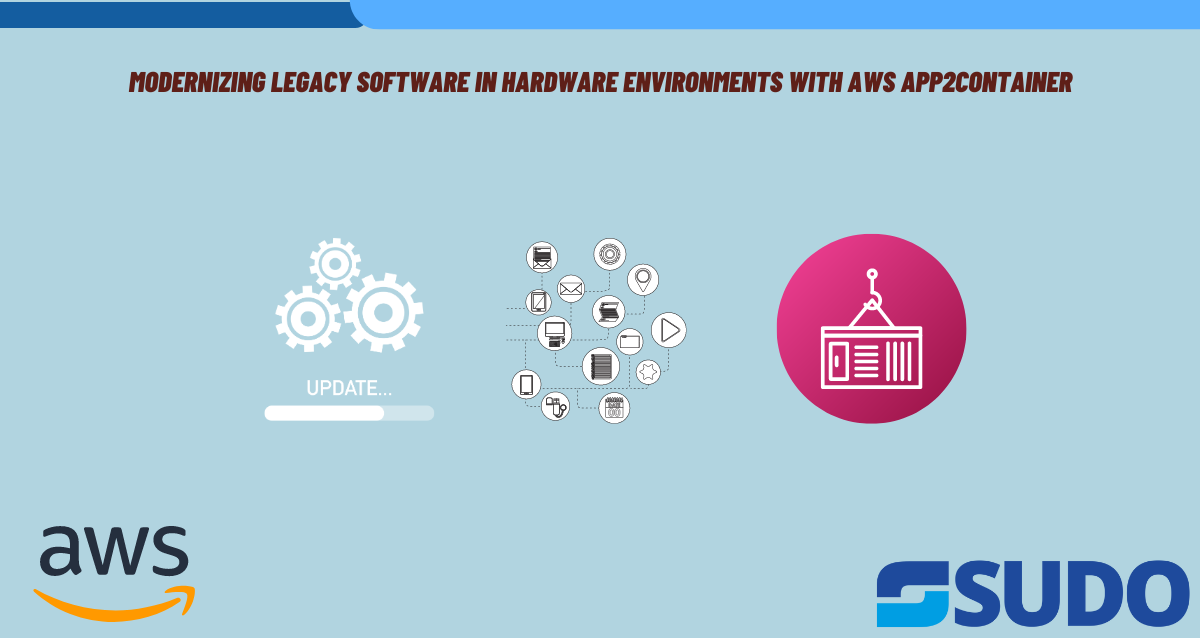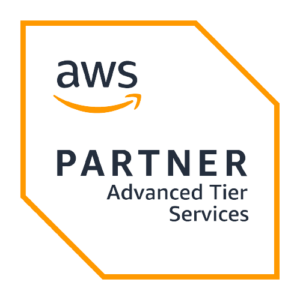
Introduction
Brief Overview of Legacy Software Challenges
The challenges faced in a business which include efficiency upgrade along with the agility control can easily be taken care of using Legacy Software. These software often struggle to fulfil the requirements of the modern environment of computing because of their outdated and old technology and infrastructure. In order to stay a challenge to the competitors, the update of these software’s should be the priority of the organizations.
Introduction to AWS App2Container as a Solution
For the purpose of better work of the legacy software’s, App2Container (A2C) was introduced by AWS. This is a service designed for the purpose of existing applications to migrate into the containerized environment. By the automatic process of migration, help related to the reduced complexities in a business with the use of Legacy Software is provided.
Importance of Modernizing Legacy Applications in Hardware Environments
The update of the Legacy Software is important for many reasons, the very first is that the upgrade improves the Scalability, with increased Scalability, workloads are handled in a much better way. Secondly, the utilization of resources is also improved which leads to lower cost of infrastructure. The last is that it promotes innovations because businesses adapt modern technologies.
Understanding AWS App2Container
Overview of AWS App2Container
The containerized application is an automated process and it is made fully automatic with the help of AWS App2Cotainer. It checks the already installed applications, identifies dependencies and then for easy deployment, Dockers containers are made.
Key Features and Benefits
- For containerization, analysis of applications is Automatic.
- Merging of AWS App2Container with orchestration service.
- Different frameworks and languages of programming support.
- Lower rate of Human error along with their own effort.
Compatibility with Different Programming Languages and Frameworks
A wide number of frameworks along with programming languages are supported by App2Container. To be limited to but included programming languages are Python, PHP and Java which provides flexibility to update applications to the businesses.
Preparing Your Environment
Setting up AWS CLI
The AWS Command Line Interface (CLI) should be installed before opening up the App2Container. This can easily be downloaded from AWS Website.
Configuring AWS Credentials
Legit AWS Credentials are required for the purpose of interaction and access of App2Container with AWS resource pack. The command of “aws configurator” is supposed to be used to set up the credentials.
Ensuring Compatibility with App2Container Prerequisites
The prerequisites in the documentation of App2Container should be checked and met. This is required for the purpose of making sure about the alignment of infrastructure with the existing application and smooth migration process.
Understanding AWS App2Container
Overview of AWS App2Container
The extensive guide provided by Amazon Web Services (AWS) is the App2Container. This makes the Migration of Application of Legacy really simple. As the Scalability and efficiency is more than often adapted by the organizations, App2Container plays a very crucial role in providing these. A deep analysis of the key components includes :
Analysis and Discovery
An in-depth analysis of the existing application is done at the beginning by App2Container. For the costly insights of the difficulties of each application, dependencies along with the configurations are discovered.
Containerization Process
After the completion of Analysis, the process of containerizing the application is much automated. Docker containers are generated which then encapsulate the application along with its dependencies.
Application-Driven Configuration
Define configurations are also allowed by the App2Container for the purpose of ensuring the alignment of the resulting container with the specific application requirements. Tailored approach is enabled because of this customization.
Key Features and Benefits
Automation and Efficiency
App2Container offers a unique feature of automating the migration process. This helps in lower rate of human error and minimum efforts manually. The transition towards the containerized environment is also paced up on by App2Container which results in innovation focused businesses and greater efficiency.
Seamless Integration
Integration with famous orchestration services of containers is seamlessly done by App2Container. These include Kubernetes and Amazon ECS. The easy management of the environment is made sure along with easy management when the application is containerized.
Scalability and Resource Optimization
Applications are highly scalable which are made by the App2Container. On demand scaling is easily made sure, reduction of cost of infrastructure and the optimization of resource utilization. This scalability is really a plus point for the applications facing resource requirements and workload.
Compatibility with Different Programming Languages and Frameworks
The design of App2Container is really adaptable. Numerous frameworks and programming languages are supported by the App2Container. The languages include
- PHP
- Java
- .NET
- Python
Preparing Your Environment for AWS App2Container
Proper configuration of the environment is very necessary for the purpose of modernizing legacy applications with AWS App2Container. The steps involve
Setting up AWS CLI
It is really mandatory to have the AWS Command Line Interface (CLI) installed on the device before interacting with the AWS services. The steps required to be followed are:
- Download and install the AWS CLI:
- Download from the official AWS CLI page.
- Select the operating system you are running (MacOs, Window, Linux)
- The guide given must be followed afterward.
- Installation verifying:
- Command prompt is required to be opened.
- Type aws –version and press Enter key.
- The displayed information should be related to the AWS CLI which will tell about the successful installation.
Configuring AWS Credentials
Valid Credentials of AWS are required by the App2Container for the purpose of access and interaction with the resources of AWS. The steps that are required to be followed includes:
- Opening of Command prompt.
- Press Enter after typing aws configure
- Secret access Id is required to be entered next.
- The Credentials can easily be taken from the AWS management console or IAM.
- Set output format along with default region.
- Enter both of the required information.
AWS Access Key ID [None]: YOUR_ACCESS_KEY_ID
AWS Secret Access Key [None]: YOUR_SECRET_ACCESS_KEY
Default region name [None]: us-east-1
Default output format [None]: json
- Verify configuration.
- To confirm that the credentials are correct, run the aws configure list.
Ensuring Compatibility with App2Container Prerequisites
Ensuring that the infrastructure and the application are aligned with the prerequisites is very important before proceeding with the App2Cotainer. The important prerequisites includes:
- Supported OS
- Windows and Linux are preferred.
- Docker Installation
- Availability of Docker is a must on the device.
- Access to AWS Resources
- Configuration of CLI with the credentials.
- Connectivity of Network
- Internet access to the machine on which App2Container is running is must to connect to AWS Services.
A very great foundation for an efficient App2Container migration process can be created by taking care of these Prerequisites.
CLI Approach for AWS App2Container
This section of the Article explores CLI approaches for App2Contaier of AWS.
Using the “aws apprunner create-service” Command
- Install the App2Container CLI
- By using the following command, App2Container CLI can easily be run.
aws configure add-model --service-name apprunner --service-model-url https://a2c-cli-models.s3.us-east-1.amazonaws.com/release/app2container-2024-01-09.normal.json- Create service of App2Container.
aws app2container create-service --source-image-uri <source-image-uri> --s3-bucket <s3-bucket-name>Replace <source-image-uri> the with the URL of the image of Docker that is required to be containerized along with <s3-bucket-name> to the name of S3 Amazon bucket.
Specifying Application Parameters through CLI
- Specific settings of application required to be configurator.
- Application parameters should be specified using update-service command:
aws app2container update-service --service-id <service-id> --container-name <container-name> --instance-role-arn <role-arn>Replace <service-id> with the App2Container Service Id, <container-name> to the name of the desired container, along with the <role-arn> to the ARN which is Amazon Resource Name.
Define containerized options:
- Use the update-service command to set containerization options:
aws app2container update-service --service-id <service-id> --target-container-image-repository <ecr-repository-uri>Replace <service-id> with the service ID, and <ecr-repository-uri> with the URI of the Amazon Elastic Container Registry (ECR) repository.
Monitoring and Managing the Conversion Process via CLI
- Monitor Progress
- Keep track of the conversion process using the describe-service command:
aws app2container describe-service --service-id <service-id>Replace <service-id> with the ID of the App2Container service.
Access Conversion Logs
- Retrieve detailed information along with logs with the get-service-log command:
aws app2container get-service-log --service-id <service-id>- Review Containerized Application
- After the completion of the conversion, the command describe-service needs to be entered to look at the details of the containerized application.
With the following of these steps, AWS App2Container power can easily be harnessed for modernization of legacy software.
Console Steps for AWS App2Container
This section will help with the step-by-step process of using the AWS Management Console for AWS App2Container. The instructions required to be followed are:
Accessing AWS Management Console
- Open the Web Browser
- Open the AWS Management Console.
- Sign in to AWS Account
- Add the credentials of AWS Account to Sign-in
Navigating to the App2Container Service
- Navigate to the App2Container Service
- After the Sign-in, “Services” In the left corner on top is to be opened.
- Locate and click on “App2Container” present in the “Migration & Transfer”
Initiating the App2Container Process
- Initiate App2Container
- Click on the “Get Started” in the dashboard of App2Container.
- Select the source of application
- The source application that is required to be containerized is to be selected.
Configuring Application-Specific Settings
- Configure application setting
- Specific details related to the applicator are to be provided, that include application name, location of source code along with extra information required for the environment.
- Specify Containerized option
- Containerized options should be defined based on the preferences.
Monitoring the Conversion Progress
- Review Configuration
- The alignment of configuration with objectives must be reviewed before proceeding.
- Initiate Conversion
- To begin with the containerizing process, press the “Start conversion”.
Reviewing and Validating the Containerized Application
- Monitor Progress
- Use the App2Container console to track the progress.
- View Conversion logs
- To identify any issue or any required area of attention, access to logs and detailed information is required to be done.
- Validation and Testing
- Testing should be performed to ensure the containerized application functions as expected.
With the follow on to these steps, the modernization of Legacy applications efficiently can be done.
Common Challenges and Troubleshooting
Addressing Compatibility Issues during Conversion
Identifying Compatibility Issues
- Challenges: Rely on specific framework or library of the application component is incompatible with containerized environment.
- Troubleshooting
- Application code should be updated to work with the latest versions of libraries and frameworks.
- Containerized features like multi-stage build should be used.
Handling Dependencies and External Integrations
Dependency Resolution
- Challenges: The external dependencies which are not easily identifiable during the phase of analysis.
- Troubleshooting
- The external dependency documentation.
- Configure the dependencies manually.
Network Connectivity Issues
- Challenge: Connection issues with the network will be faced by containerized applications when interacting with external services.
- Troubleshooting
- To align the container with the policies of organization, network settings should be configured.
Debugging and Resolving Common Errors
Unhandled Exceptions
- Challenges: application may face error when put onto run by containerized application.
- Troubleshooting
- Inspection of logs of the application which are inside the error messages.
- Large error handling implementation in the application code.
Resource Allocation Issues
- Challenges: Resource related problems are expected to occur in containerized applications, for example low memory of CPU.
- Troubleshooting
- Adjustment of the parameters of resource allocators.
- With the help of AWS CloudWatch, monitor resource utilization.
Docker Build Failures
- Challenges: Because of the incorrect configurations and dependencies that are missing, Docker build features can occur.
- Troubleshooting
- Building of configuration for errors and review of File of Docker.
- For the identification of issues, Docker build logs should be utilized.
Security Configuration Issues
- Challenges: Vulnerabilities in the system can be caused because of the security related misconfigurations.
- Troubleshooting
- Practices like securities policies implementation along with container limits should be followed.
- For enhanced container security, AWS Security tools should be used.
The chances of better performance of the AWS App2Container will be increased if these challenges are addressed successfully.
Best Practices for AWS App2Container
The methods than can help with the better and efficient working of App2Container migration are mentioned below:
Optimizing Application Performance in Containers
Fine-Tune Container Resources
- Best Practices: Resource allocation of the container should be adjusted, it includes the CPU and memory limits.
- Rationale: Best performance is made sure by the best resource allocation.
Utilize Container Orchestration
- Best Practices: Orchestration platforms should be leveraged which includes Amazon ECS for the better management of applications that are containerized.
- Rationale: Resource utilization and scaling is simplified by orchestration.
Implement Efficient Logging and Monitoring
- Best Practices: To help with the analysis of performance, solution monitoring along with robust logging is implemented.
- Rationale: Performance issue and proactive identification is enabled by Real-time insights.
Security Considerations during the Migration Process
Apply Least Privilege Principle
- Best Practices: Least privileges necessary are assigned to this, it reduces the security breaches.
- Rationale: Overall container security is enhanced by limiting privileges.
Implement Secure Configuration Practices
- Best Practices: Secure practices of configuration are done for both underlying infrastructure and containers.
- Rationale: Negative aspects are decreased and the full security posture of the application is strengthened.
Regularly Update and Patch Containers
- Best Practices: By keeping an eye on the updates of containers and to address security vulnerabilities.
- Rationale: To make sure the latest patches of securities are applied, containers should be kept up to date.
Scaling and Managing Resources Effectively
Dynamic Scaling with Orchestration
- Best Practices: With the use of the Orchestration container platforms, dynamic scaling should be implemented.
- Rationale: The resource allocation on cost-effectiveness and demand is ensured by auto scaling.
Use Auto-Scaling Groups
- Best Practices: usage of auto scaling groups for the purpose of managing and scaling containerized applications while using AWS Services.
- Rationale: The capacity is automatically adjusted by the auto scaling group.
Implement Resource Tagging
- Best Practices: For effective management, resource tagging to containers should be applied.
- Rationale: Simple allocation of cost and tracking is ensured by resource tagging.
Case Studies
The success stories of the applications of legacy modernization using AWS App2Cotainer will be discussed me this section:
Real-World Examples of Successful Legacy Application Modernization
Retail Industry Transformation
- Challenge: An E-commerce platform with scalability issues and bottlenecks during best shopping seasons.
- Solution: To modernize the application, App2Container is used.
- Outcome: Improved scalability along with better traffic handling during shopping peak hours was made sure by updated architecture.
Financial Services Application Overhaul
- Challenge: An institution of financial service was stuck with the handling of outdated legacy applications.
- Solution: To containerize the application, App2Container was used.
- Outcome. The performance of the application was the only thing improved but the scalability was also ensured.
Demonstrating Improved Performance and Scalability
Healthcare System Modernization
- Challenges: A provider of the service of healthcare was facing issues with the information of the patient system and daily breakage were faced.
- Solution: The usage of App2Cotainer shifted the application to a containerized environment.
- Outcome: Very prominent improvements were noticed which included better reliability along with performance. It also reduced the downtime along with an increase in better patient care and other things.
Manufacturing Process Optimization
- Challenge: to manage the process of production and market change of demand, a manufacturing company was using Leverage software’s.
- Solutions: The migration of micro services were facilitated by App2Cotainer, which also made the updates and improvements.
- Outcome: Better performance of planning and production were seen by the business of manufacturing. More efficient processes of manufacturing and low lead time were also experienced.
Encouraging Businesses to Embrace Modernization for Increased Efficiency
The legacy software can become a brick in the way of efficiency and agility in the newer landscape of technology. To change this challenge into opportunity, App2Container emerged.
- Benefits
- Scalability: The scaling on dynamic bases and insurance of optimal resource utilization is allowed by the containerized applications.
- Performance Optimization: The App2Container combined with the newer legacy software provides better and enhanced performance and best user experience.
- Agility & Innovation: The adoption of Micro services architectures and development in fostering agility is enabled by containerization. Innovation to empower business was also provided.
Future Prospects and Advancements in Legacy Software Modernization
Further innovation and advancement in the legacy software is made sure as the advancements in technologies occur everyday. The best features include:
- Integration with AI\ML technologies
- The automation of App2Container can easily be made sure by the usage of Machine Learning (ML) and Artificial Intelligence (AI).
- Better Security Features
- Advanced security features can be taken advantage of by future integration of tools in the App2Container which addresses the evolving threat landscape.
- Continuous optimization
- The analysis and suggestion of improvements for the purpose of containerized application overtime can also be done with the usage of App2Container.
- Expanded language and framework support
- The list of frameworks and supported languages can easily be expanded by AWS.
At the end, the usage of AWS App2Container not only helps with the handling of challenges immediately but also helps with the future success of business. The businesses can make the tools better by doing advancements in the App2Container application.


